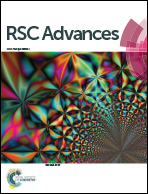The magnetism of 1T-MX2 (M = Zr, Hf; X = S, Se) monolayers by hole doping†
Abstract
The magnetism of hole doped 1T-MX2 (M = Zr, Hf; X = S, Se) monolayers is systematically studied by using first principles density functional calculations. The pristine 1T-MX2 monolayers are semiconductors with nonmagnetic ground states, which can be transformed to ferromagnetic states by the approach of hole doping. For the unstrained monolayers, the spontaneous magnetization appears once above the critical hole density (1014 cm−2), where the p orbital of S or Se atoms contributes the most of the magnetic moment. As the tensile strains exceed 4%, the magnetic moments per hole of ZrS2 and HfS2 monolayers increase sharply to a saturated value with increasing hole density, implying obvious advantages over the unstrained monolayers. The phonon dispersion calculations for the strained ZrS2 and HfS2 monolayers indicate that they can keep the dynamical stability by hole doping. Furthermore, we propose that the fluorine atom modified ZrS2 monolayer could obtain stable ferromagnetism. The magnetism in hole doped 1T-MX2 (M = Zr, Hf; X = S, Se) monolayers has great potential for developing spintronic devices with desirable applications.



 Please wait while we load your content...
Please wait while we load your content...